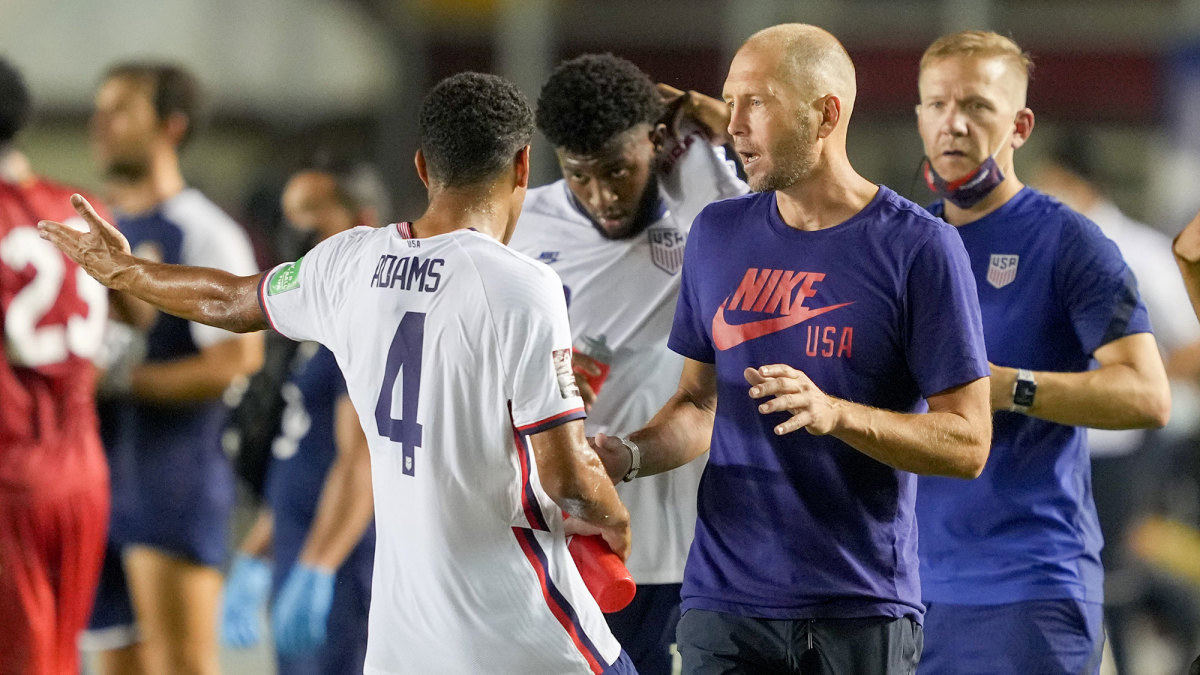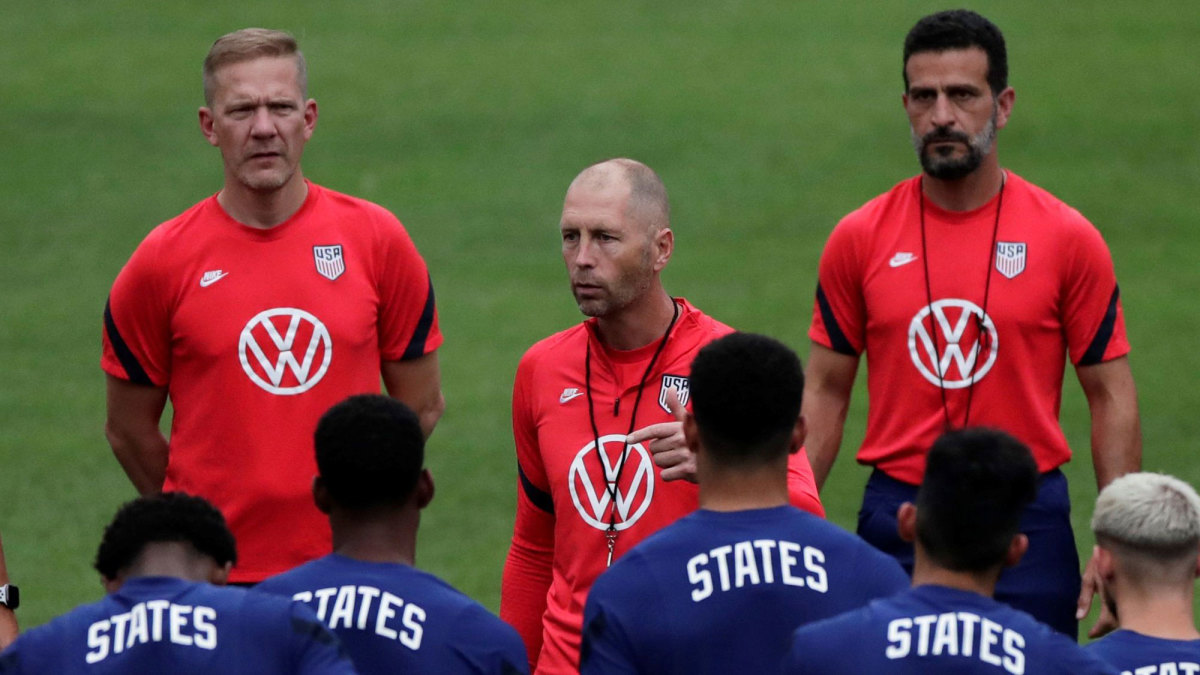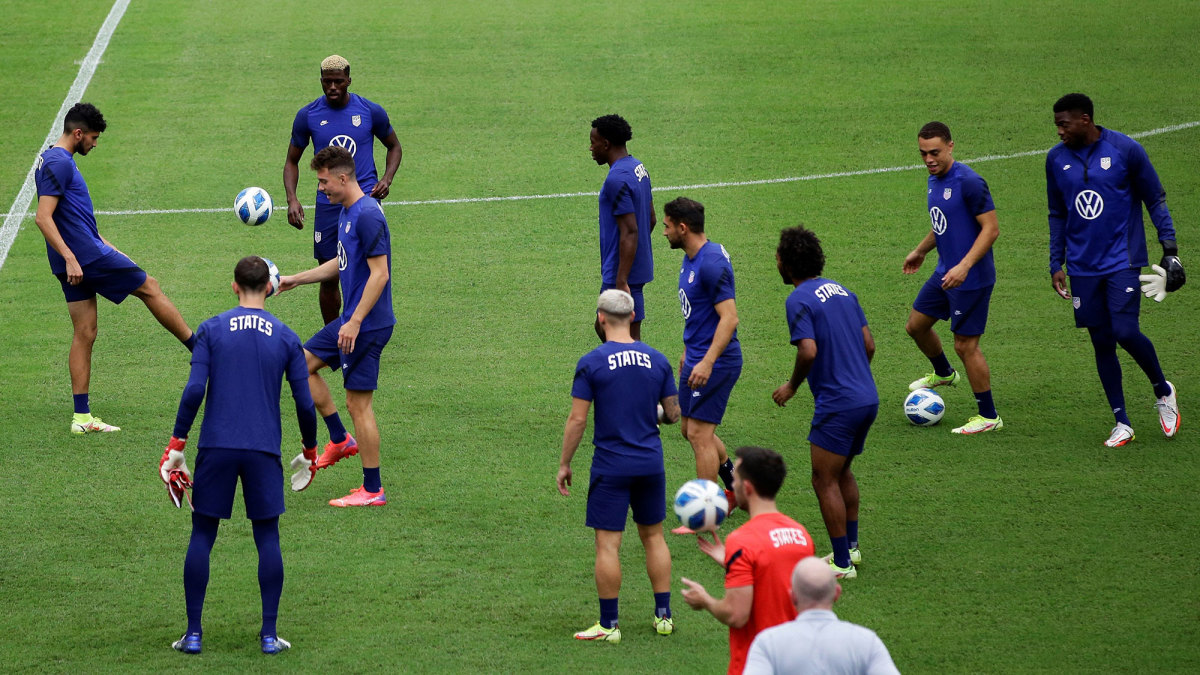USMNT Turns to Columbus Again for the World Cup Qualifying Jolt it Needs

COLUMBUS, Ohio — In its hour of need, and in search of a boost to its World Cup qualifying campaign following an ugly, dispiriting performance in Panama, the U.S. men’s national team will rely on a comfortable old standby. It will once again turn to Columbus.
The venue is different—the U.S. will play at the Crew’s Lower.com Field for the first time—and the setting will be new for many members of a youthful side. But Columbus itself—the city and supporters—traditionally can be counted on to do its part. Well known as the site of the first soccer-specific MLS stadium and five editions of the U.S.-Mexico World Cup qualifier, Ohio’s capital has come as close as any city can to being a reliable, 21st-century home to the American men.
It’s been almost five years since the U.S. visited, and the most recent game, a loss to El Tri, represented the only setback in 12 matches here (including 10 qualifiers). Starting a new streak on Wednesday evening against Costa Rica will be vital. Following Sunday’s 1–0 defeat to Los Canaleros, the U.S. (2-1-2) is confronting questions about its depth and mentality while clinging to one of Concacaf’s three direct World Cup berths by a single point. There will be eight games remaining following Wednesday’s tilt, but the runway isn’t as long as it may appear with visits to Mexico, Costa Rica and Canada still to come.
The stakes are high, the margin for error is razor thin and the Americans must rebound and rise to the occasion. Coach Gregg Berhalter, who managed the Crew before taking the U.S. job, said Tuesday that the supportive surroundings should set a beneficial stage.
“We know it’s going to be a different game,” he said. “Different opponent, playing at home, playing in front of great fans, loud atmosphere, and we want to [use] that momentum of a home game for sure.”

Why does that momentum matter? Because the impact of intangibles was evident on Sunday in sultry Panama City. Berhalter didn’t field a first-choice lineup as he took fitness, fatigue and these three-games-in-seven-days Octagonal windows into consideration. But the men he deployed were established internationals, most of whom played key roles in winning the Concacaf Gold Cup or Nations League this summer. He didn’t find them on the street. There was probably enough quality on the field to get a result.
“We believe in every single player in this squad and I don’t regret in any moment playing that lineup. I regret more of our performance,” Berhalter said.
That performance was brutal, and the U.S. was a slow, passive and a step behind from the opening whistle at the Estadio Rommel Fernández. The crowd was slow to arrive and wasn’t that boisterous early. But it was inspired by a home team that was buzzing from the start, and the stadium quickly came to life. That positive Panamanian feedback loop helped bury the Americans, who acknowledged following the loss that their mentality didn’t meet the moment.
Tyler Adams, who entered as a second-half substitute, said he noticed “a lack of energy and competitiveness.”
Goalkeeper Matt Turner said, “I think physically the intensity wasn’t there. They got a huge boost from their home crowd and we didn’t match and exceed that.”
Midfielder Kellyn Acosta admitted, “We didn’t match the intensity. They came from the front in the first minute.”
Berhalter didn’t have a specific explanation for how or why his team failed to play with the vigor and conviction a qualifier requires. He just knows it was lacking, and that the U.S. will have to rediscover those qualities if it’s going to get its World Cup mission back on track. Starts have been an issue for the Americans in recent months. Sunday’s defeat marked the eighth straight game in which the U.S. failed to find a first-half goal. That frustrating streak includes the Gold Cup knockout rounds plus the first five World Cup qualifiers.

Mentality isn’t the only culprit. The U.S. certainly came to play in last week’s 2–0 win over Jamaica in Austin, for example. But it does demonstrate that there’s not much room to maneuver, and that starting a match in first gear can be detrimental.
“These are tight games, man. They’re not going to be blowouts,” Berhalter said. “For us, it’s about the key moments of the game. It’s about staying focused. It’s about bringing that intensity. And these are things we all talked about.”
If the Americans can find that intensity and if Columbus does its part, that’ll lift a lineup that should be closer to Berhalter’s available A-list. The U.S. will still be without injured wingers Christian Pulisic and Gio Reyna, who have missed the entire window. But Adams, striker Ricardo Pepi, defender Sergiño Dest, winger Brenden Aaronson and center back Miles Robinson, who all began the Panama game on the bench, seem likely to be included at kickoff against Costa Rica. Weston McKennie’s availability remained uncertain on Tuesday—he missed the Panama trip with a sore quadricep muscle—but Berhalter said the Juventus midfielder was “making progress.”
Berhalter will be counting on them to make a statement at the outset. Feed off the environment and the crowd. See them be inspired in turn. Make Costa Rica (1-1-3) feel like a visitor under siege. The Ticos are a veteran team (their roster features 17 players aged 29 or over, compared to three for the U.S.) that knows its way through the qualifying gauntlet and is tough defensively. The Americans have to be ready for a fight they shied away from in Panama.
“For us it’s about getting back to what we do well and that’s movement off the ball. It’s everything we talked about pre-Jamaica game. It’s exactly what's back on the stage now. Part of the idea was to get seven fresh guys on the field and really make Panama pay, and we didn’t do that. And thats disappointing, and we’re certainly focused on that now in this game,” Berhalter said.
“We have home fans. It’ll be a great atmosphere, and we want to capitalize on that,” he continued. “We know what it’s like playing away in front of fans and we want to have that same type of advantage.”

Defender Antonee Robinson, who missed the Panama game because of England's COVID-19 quarantine protocols (he's based at Fulham, and Panama is on the U.K.'s "red list" for travel), made an interesting point here on Tuesday. The U.S. is circled on the opposition’s schedule, he said. It’s the regional heavyweight in so many ways, and its national team has been hyped considerably thanks to the emergence of so many young, talented players. The other team is up for this game. The Americans have to match that.
“That just makes every opponent we’re going to play more dangerous than they might necessarily be against another team,” said Robinson, who’s hoping to play Wednesday after nursing a knee issue. “That’s something we’re aware of and we know we’ve got to keep our heads about that, and just try to keep switched on about what we’re doing but be aware that they’re going to give everything.”
If playing the U.S. helps Costa Rica get into big-game mode, the U.S. will hope that playing in Columbus helps it do the same.
“The next game is the most important game, so the mood now is that we’ve got to go beat Costa Rica. The boys are obviously disappointed with the last result, but the mentality is all for the game tomorrow,” Robinson said. “They’re going to come to our stadium. It’s going to be a really good atmosphere.”
More USMNT Coverage From Brian Straus:
